Are You Having Trouble Converting Your Leads? Here’s Why.
Know the top reasons why your leads are not converting.
Did you know some companies are measuring the wrong KPI for lead & signup flow. So what should you be measuring?
Today, we offer to double down on the set of KPIs used to measure the success of a signup flow, which is a term we use to describe the user experience starting from any Call-To-Action on the landing page to the completion of the actual signup process.
At Upflowy, we have found that when the question “how successful is your signup flow?” is asked, a lot of growth leaders and product managers simply answer with this statement, “we have a XX% completion rate”. Sometimes they call it the “signup rate”. This suggests that the KPI they care about the most is really how many people completed the signup flow, not whether they’re in the right target, or whether they will ultimately convert.
This answer has always been perplexing to me. If the completion rate was the main KPI, then most of these lead and signup flows should ask for an email only. Yet, we consistently see signups flows displaying long forms or multiple steps forms, starting with the websites of our most beloved scale-ups and unicorns.
This realisation was begging for us to dive deeper into the proper use of KPIs to measure signup success. Why are these KPIs so important? Because it allows us to calibrate our flows to the right audience. It allows us to continue to improve our user experience. Measure the wrong KPI, and you might end up making the wrong decision altogether.
We’ve studied the companies who have the bandwidth to invest in optimising every single step of their funnel. The companies we’ve listed below also understand the importance of these investments and are continually trying to deliver improvement to their funnel.
What we’ve discovered is that they consistently display complex signup flows, featuring up to 8 steps.
You will see below examples of companies who’ve already worked hard to optimise their signup flow to their audience:
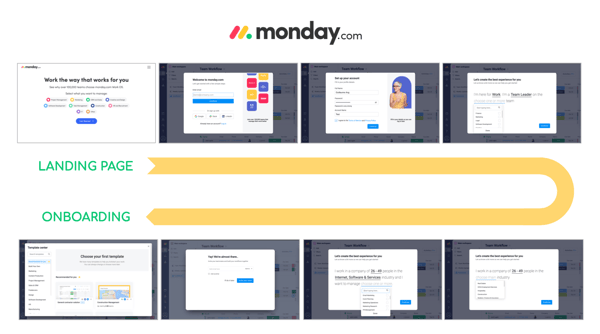
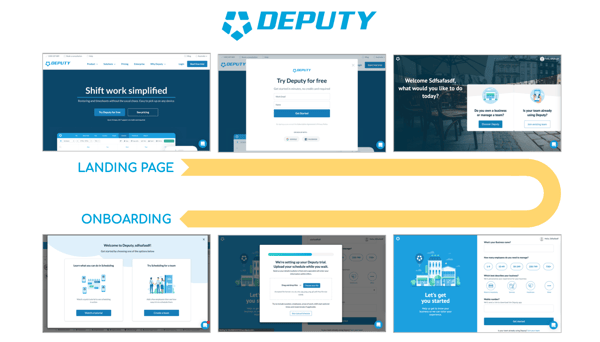
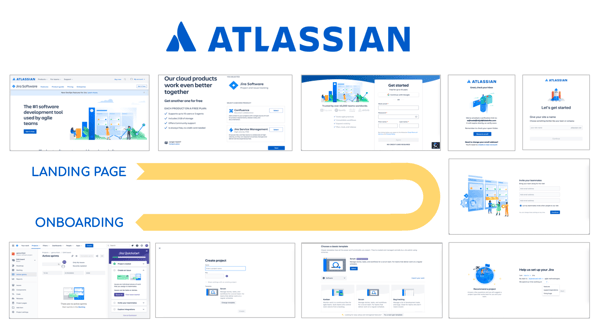
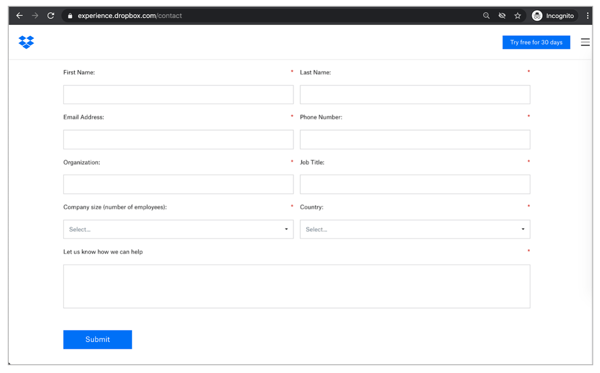
So, why do these companies rely on large numbers of questions and steps in their lead and signup flows?
The first and most obvious answer revolves around the purpose of warming up lead engagement which in the case of SaaS signups, translates into knowing more about the user in order to customise the onboarding experience for them.
A company might do this by asking some of the following:
These questions are also sometimes used to filter out those who are ready to convert and those who aren’t, with:
Then of course, questions to help the company with marketing, advertising and measurement. These include:
Each business will be asking different questions based on the outcome and information they need to know about their desired audience.
For any business, adding complexity to their lead and signup flow should ultimately contribute towards better activation and better sales.
It should be optimised for conversion into a paying user, rather than completion. This is why we believe that the KPI that should drive the optimisation of any signup flow is the conversion of leads into customers.
Most marketing leaders have an intimate understanding of this, otherwise, they wouldn’t be incentivising marketing agencies on lead conversion and would only pay them on the number of leads.
The same goes for your lead and signup flows. The point is to learn more about your audience so you can build on their wants and needs to deliver them your products or services. Once you have key information, it makes it a lot easier to sell and communicate with this audience.
While I hope it now makes conceptually sense to use conversion into paying users as the lead KPI for your lead and signup flows, it might still remain quite obscure how to turn it into an actionable KPI.
After all, a lot needs to happen after the completion of the signup flow before the lead converts into a paying user.
Let’s start by agreeing on a simple definition for the conversion rate:
Conversion rate = Number of paying users / Number of Landing Page Visitors
Please note that you could extend this definition to a larger part of the funnel. It could, for example, include the traffic acquisition part:
Conversion rate = Number of paying users / Number of Ad Displays
But let’s stick to our initial definition for now and let’s imagine we apply it to a standard Freemium SaaS business model. Then you would most likely be able to also calculate the Conversion Rate that way:
Conversion rate =
Landing Page Click Through Rate x Signup Completion Rate x Activation Rate x Upgrade Rate
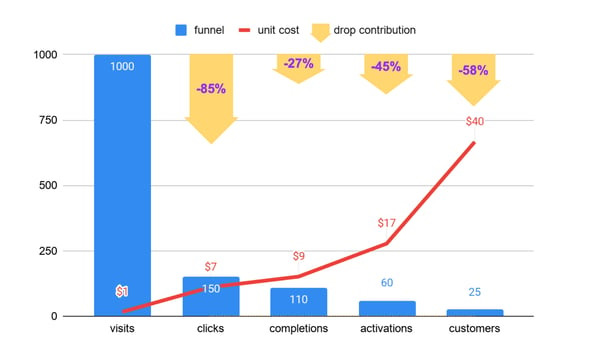
In this scenario, the conversion rate would be 2.5% = 85% x 27% x 45% x 58%.
We’ve assumed here 1000 initial visitors costing $1 each to acquire. This funnel generates 25 customers costing $40 each to acquire.
The point of optimising signup for conversion rate rather than for completion is that it might sometimes make more sense to have a lower completion rate if it simultaneously increases the number of activations and customers.
Imagine now that by asking more information during your signup flow (increasing the completion drop by 75% from 27% to 47%), you end up making your activation process much more efficient (decreasing the activation drop by 71% from 45% to 13%):
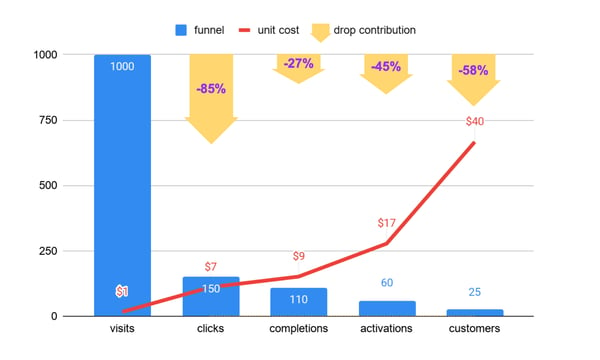
In this upgraded scenario, the conversion rate would now be 3% = 85% x 47% x 13% x 57%.
You would have decreased your final Cost of Acquisition per Customer (CAC) from $40 to $33, saving a huge 17.5% ($7out of $40) of your marketing budget!
As this example shows, you can only make informed decisions about any step of your funnel by looking at the overall picture.
Note: is it equivalent to look at the final CAC instead of the overall Conversion Rate. It is most of the time a better KPI to communicate about because it is easier for people to represent what it means, but it is also harder to calculate, because it assumes that you have a unified way to track your acquisition costs.
We haven’t yet provided a good answer to the question an exec or your cofounders might ask you about the signup flow you are responsible for: “How successful is it?”
We believe that the absolute best way to give a short answer is by highlighting how the work you’ve made on it has marginally improved the Conversation Rate, or the CAC.
In the example above, I would definitely have answered:
“Our recent experiments on the signup flow have helped us reduce the CAC by 17.5%, from $40 down to $33.”
Because you’ve stayed with us until this point of the article, we feel comfortable adding another layer of complexity to the reflexion.
Another argument towards making your signup flows more complex is that allowing people that are not the right potential customers signup for the free version of your tool or for a sales meeting create numerous hidden costs for a lot of companies. Just to mention a few:
We’ll try to expand on that in a future article.
The overall conclusion is that trying to cater to the largest amount of people usually comes with different pitfalls. We recommend you to experiment as much as possible at the step of signup in order to:
Hopefully, we gave you some tools today to convince your peers and managers of the opportunities hidden in signup flow optimisation, and some clues on how to take action.
Please share all your feedback with us.
Know the top reasons why your leads are not converting.
Web3 is the future. By implementing adaptable strategies now, you'll position your business for success during the Web3 era.
How will Web3 influence marketing? Guillaume Ang unpacks the impacts and consequences for companies trying to reach their customers and their data.
Upflowy makes building forms for your business easy, a drag and drop tool to create engaging and enticing experiences with your potential customers. Whether it be a booking form, a feedback survey or a fun quiz, you'll see the results flood through.
Not only is it easy to bring into your website, but you can connect it to the apps your business use so that all the answers are in the right place.